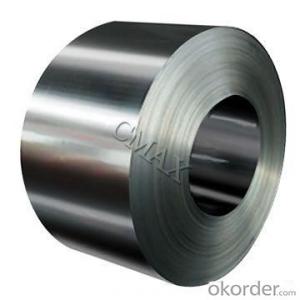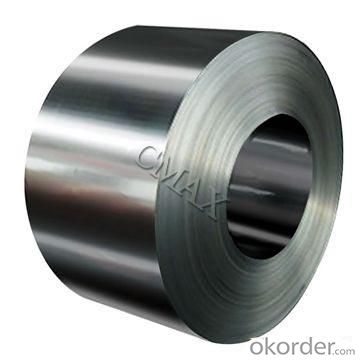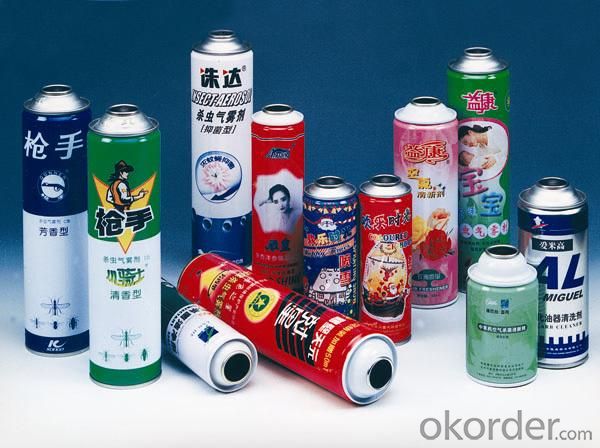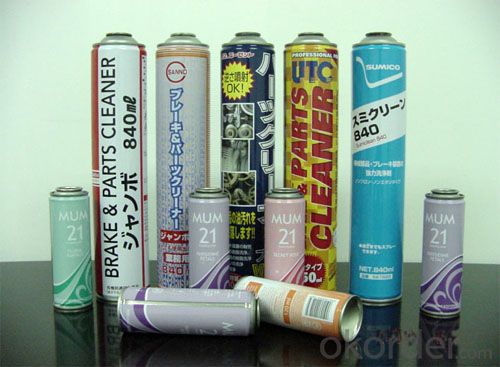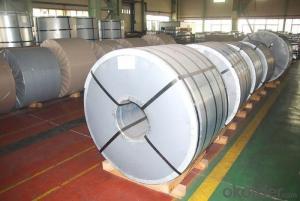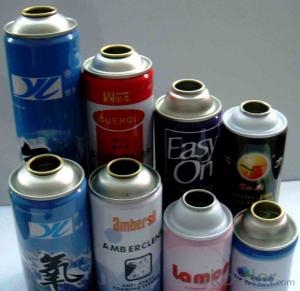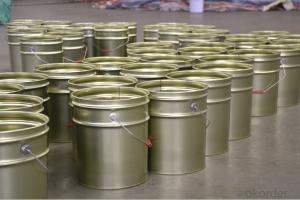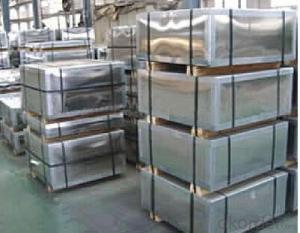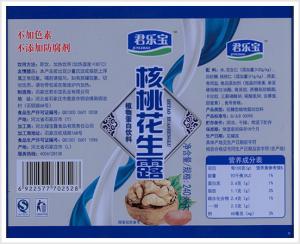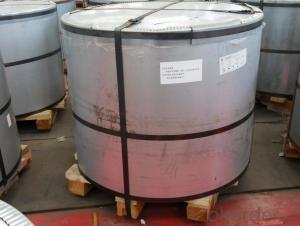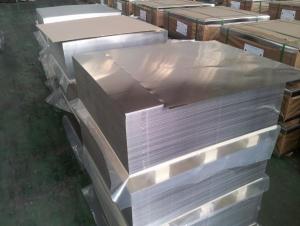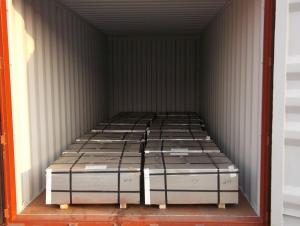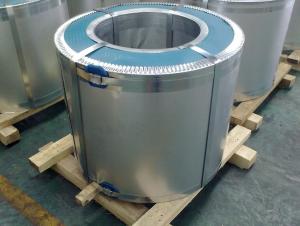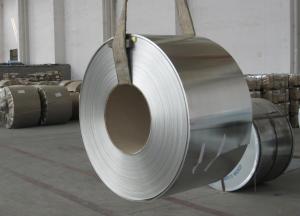MR Tinplate GIS G3303, Aerosol Can Usage
- Loading Port:
- China main port
- Payment Terms:
- TT OR LC
- Min Order Qty:
- 25 m.t.
- Supply Capability:
- 40000 m.t./month
OKorder Service Pledge
OKorder Financial Service
You Might Also Like
1.Usage
Tinplate is widely used for making all types of containers, containing industrial usage such as paint can, oil can, aerosol cans etc., and food cans like milk powder cans, tomato paste can, dry food cans etc.
2. Quality
As a state owned company and a large tinplate supplier in China, our tinplate quality ranks 1st level in China, similar to Bao Steel, Posco etc.
3. Specification
standard: GB/T2520, JIS G3303, DIN EN10202
Material: MR /SPCC
Thickness available: 0.16-0.50MM
Width available: 600~1050MM
Temper grade: T1 – DR8
Tin coating: ordinary 2.8g/2.8g, 5.6g/5.6g and others
Package: sea worthy export package.
Applications: Tin can for chemicals & paint cans, industrial cans, food cans
4. Our factory photo & equipments

5. Our Markets:
now our tinplate has been sold to more than 50 countries, including Europe country, Gulf Area, South American, South Afric etc.
6. Our Overseas Wareouses:
Furthermore, in the year 2014, we have more than 10 overseas warehouses all over the word, located in KSA, UAE, Oman, Russia, Kuwait, Qatar, Oman, Chile, Brazil etc.
7. FAQ
a. what's the annual output?
about 500,000 tons per year.
b. where's the raw matrial from?
our hot rolled coil is purchased from Capital Steel and other state owned mill, with quite good quality.
c. how long is the delivery time?
normally for SPCC about 45~55 days, while 65~75 days for MR material
d. how to control the quality during production process?
inside our workshop, we have MES syestem. It realizes the optimization of the production procedure in the workshop. It could record each step of the whole production procedures, and if some problem appears, factory could easily found and take action, it’s quite helpful to monitor and control the quality.
- Q: What are the common misconceptions about tinplate packaging?
- One common misconception about tinplate packaging is that it is not environmentally friendly. While tinplate is made from steel, which is a finite resource, it is highly recyclable and can be reused multiple times without losing its quality. Additionally, tinplate packaging has a long shelf life, reducing the need for frequent replacement. Another misconception is that tinplate packaging is easily damaged or dented. However, modern manufacturing techniques have made tinplate packaging highly durable and resistant to external pressures, ensuring the protection of the products inside.
- Q: What are the common sizes and shapes of tinplate containers?
- Common sizes and shapes of tinplate containers include round cans, rectangular tins, and square boxes. These containers come in various sizes, ranging from small ones that can hold a few ounces to larger ones that can store several pounds of products.
- Q: What are the different types of tinplate finishes available?
- There are primarily three types of tinplate finishes available: bright, stone, and matte. Bright tinplate has a shiny and reflective surface, stone tinplate has a textured and grainy appearance, and matte tinplate has a smooth and non-reflective finish. These different finishes offer various aesthetic options for packaging and can be chosen based on the desired look and feel of the final product.
- Q: Can tinplate packaging be used for electronic products?
- Yes, tinplate packaging can be used for electronic products. Tinplate offers excellent protection against moisture, corrosion, and physical damage, making it a suitable choice for packaging sensitive electronic components. Additionally, tinplate can be easily shaped and printed upon, allowing for customizable designs and branding opportunities.
- Q: Can tinplate be recycled?
- Yes, tinplate can be recycled. It is made of steel coated with a thin layer of tin, and both steel and tin can be recycled indefinitely without losing their properties. Recycling tinplate helps conserve resources and reduce waste.
- Q: Can tinplate be used for packaging of organic products?
- Yes, tinplate can be used for packaging of organic products. Tinplate is a type of steel coated with a thin layer of tin, which provides a protective barrier against corrosion and ensures the product's freshness and safety. It is a durable and sustainable material that is commonly used in the food industry, including for packaging organic products. Additionally, tinplate is recyclable, making it an environmentally friendly choice for organic packaging.
- Q: How does tinplate contribute to sustainable packaging?
- Tinplate contributes to sustainable packaging by being highly durable, recyclable, and resistant to corrosion. It can be reused multiple times, reducing the need for new materials. Tinplate also provides excellent protection to the packaged goods, reducing food waste and extending product shelf life. Additionally, its recyclability helps in reducing the environmental impact by minimizing waste generation and conserving resources.
- Q: What are the main applications of tinplate in the jewelry industry?
- The main applications of tinplate in the jewelry industry include the production of tin-plated jewelry components such as clasps, findings, and beads. Tinplate is also utilized for decorative purposes, adding a shiny and lustrous finish to jewelry pieces.
- Q: What is the difference between food grade tinplate and ordinary chemical tinplate? What is the difference between MR material and SPCC?
- Tinned food grade and non food grade. The main brands are MR and SPCC. because the meat food will be wall mounted in contact with food tin coated with two layers of yellow food, the food is yellow anti solvent, anti general acid-base, thus ensuring the safety of food packaging containing iron. The food there is no absolute security argument, now the technology has been fully capable of ensuring the safety of food containing.MR's impurity is a little more than SPCC, and the price is a little high. It's OK to use SPCC to spread two layers of food on the outside
- Q: What are the common printing methods used on tinplate?
- The common printing methods used on tinplate include lithography, screen printing, and digital printing.
Send your message to us
MR Tinplate GIS G3303, Aerosol Can Usage
- Loading Port:
- China main port
- Payment Terms:
- TT OR LC
- Min Order Qty:
- 25 m.t.
- Supply Capability:
- 40000 m.t./month
OKorder Service Pledge
OKorder Financial Service
Similar products
Hot products
Hot Searches
Related keywords
